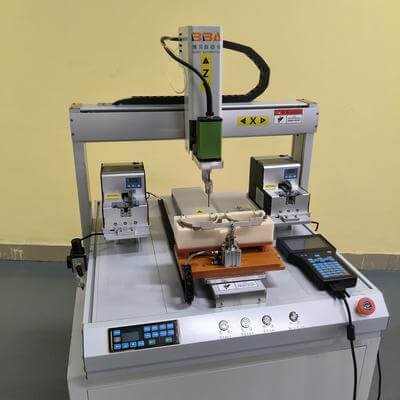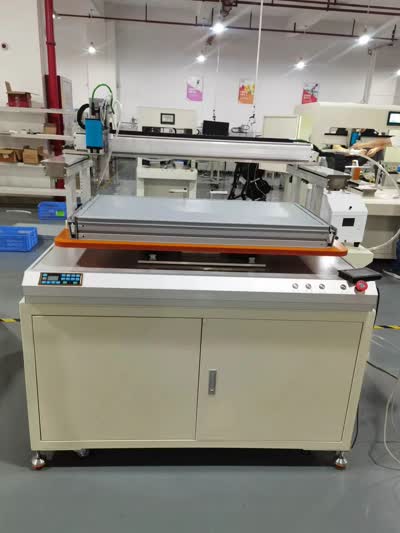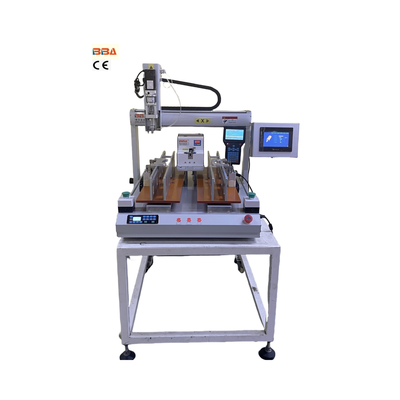Servo vs Pneumatic Screwdrivers: Differences, Comparison, Guide
| Product Name | Applicable industries |
| Servo Screwdriver Robot | LED Lighting Industry |
Differences Between Servo Motor and Pneumatic Screwdrivers
In the world of industrial automation, fastening and assembly operations are critical for product quality and manufacturing efficiency. Two primary technologies dominate this space: servo-electric screwdrivers and pneumatic screwdrivers. While both are designed to drive screws, their underlying principles, performance characteristics, and ideal applications differ significantly. Understanding these differences is essential for selecting the right tool for your production line.
Fundamental Operating Principle
The core distinction lies in their source of power and control mechanism. A pneumatic screwdriver is powered by compressed air. The air pressure drives a pneumatic motor, which in turn rotates the screwdriver bit. The torque output is typically adjusted mechanically, often by regulating air pressure or using a clutch mechanism. This makes them simple but less precise.
In contrast, a servo motor screwdriver is an electromechanical device. It utilizes a high-precision servo motor controlled by a sophisticated digital driver. This system allows for exact control over every aspect of the fastening process—rotation speed, torque, angle, and even the number of rotations. The servo motor provides feedback to the controller, enabling real-time monitoring and adjustment for unparalleled accuracy.
Performance and Control
This difference in operation leads to a vast gap in performance and control capabilities.
- Torque Accuracy and Repeatability: Servo motor screwdrivers excel here. They can achieve torque repeatability within ±1-2%, ensuring every screw is tightened to the exact specified value. This is paramount in industries like electronics or aerospace where under-torquing or over-torquing can lead to product failure. Pneumatic tools, with their mechanical clutches and dependence on consistent air pressure, typically have a wider tolerance range, often around ±5-10% or more.
- Programmability and Flexibility: Servo systems are software-driven. Operators can create and save numerous fastening programs for different products or screw types. Parameters like torque, angle, and speed can be finely tuned and changed instantly on the digital interface. Pneumatic tools require manual mechanical adjustments to change torque settings, a slower and less flexible process.
- Data Collection and Traceability: A key advantage of servo screwdrivers is their ability to generate detailed data for each fastening operation. This data, including actual torque and angle values, can be logged and used for quality control and traceability, essential for compliance in regulated industries. Pneumatic tools generally lack this data-logging capability.
Energy Efficiency and Operational Cost
Servo motor drivers are highly energy efficient. They only consume electricity during the actual fastening cycle and at idle. Pneumatic systems, however, require a continuous supply of compressed air. Compressing air is an inherently energy-intensive process, and air leaks in the distribution system can lead to significant energy waste over time, making pneumatic systems generally more costly to operate.
Noise and Maintenance
Pneumatic screwdrivers are notoriously loud due to the exhaust of compressed air, often requiring operators to use hearing protection. Servo-electric screwdrivers operate much more quietly, contributing to a better shop floor environment. Maintenance also differs; pneumatic tools require regular lubrication and are susceptible to issues from moisture in air lines. Servo tools have fewer mechanical wear parts and primarily require periodic brush replacement (if using brushed motors) or minimal maintenance if brushless motors are used.
Choosing the Right Tool
The choice between these two technologies is not about which is better overall, but which is better for your specific application.
Choose Pneumatic Screwdrivers for applications where initial cost is the primary concern, extreme precision is not critical (e.g., some rough assembly tasks), and the infrastructure for compressed air is already in place.
Choose Servo Motor Screwdrivers for high-precision assembly, applications requiring full traceability and data logging, complex multi-step fastening sequences, and environments where noise reduction and energy savings are priorities. Their higher initial investment is often justified by superior quality control, flexibility, and lower long-term operational costs.
In conclusion, while pneumatic screwdrivers offer a robust and cost-effective solution for simpler tasks, servo motor screwdrivers represent the pinnacle of precision, control, and intelligence in modern industrial fastening. Evaluating your requirements for accuracy, data, and total cost of ownership will guide you to the optimal choice for your automated assembly process.



